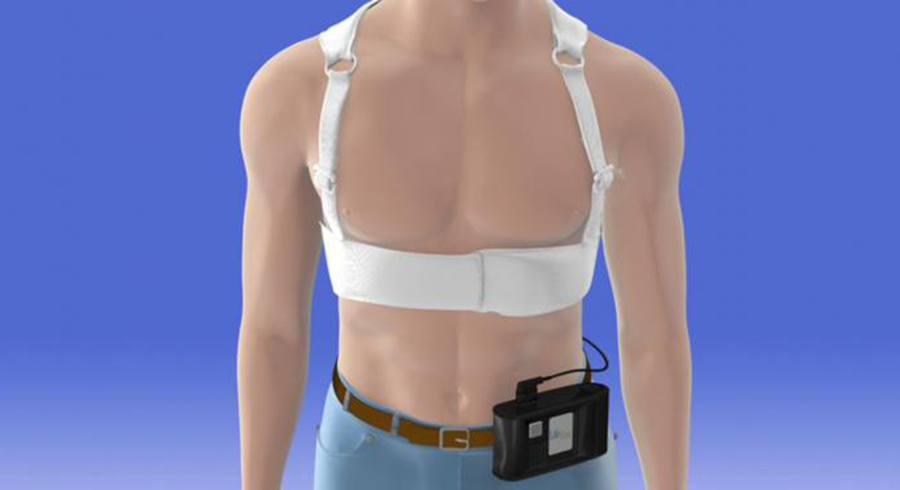Patients with myocardial infarction may get some benefit from wearing a cardioverter-defibrillator in the month after a heart attack, but it does not reduce arrhythmic death in these patients, according to a study published in the New England Journal of Medicine.
The VEST trial, led by Jeffrey E. Olgin, MD, and funded by the National Institutes of Health and Zoll Medical, recruited 2,302 participants. Among the participants, 1,524 patients with acute myocardial infarction and an ejection fraction of 35 percent or less, were given wearable cardioverter-defibrillator plus guideline-directed therapy. And the rest, 778 participants received only guideline-directed therapy (control group).
Patients wore the vest for an average of 18 hours a day, though wear time was bimodal, according to the authors. While patients who were consistently using the device wore it for more than 20 hours every day, those who used it less hardly wore it at all. According to the researchers’ data, the percentage of patients who wore the vest on any given day fell from 81 percent just after randomization to 41 percent at 90 days.
The researchers said death rates were improved in the device group with arrhythmic death occurring in 1.6 and 2.4% of participants in the device and control groups, respectively. Death from any cause occurred in 3.1 and 4.9% of participants in the device and control groups, respectively and non-arrhythmic deaths occurred in 1.4 and 2.2%, respectively.
“Among patients with a recent myocardial infarction and an ejection fraction of 35 percent or less, the wearable cardioverter-defibrillator did not lead to a significantly lower rate of the primary outcome of arrhythmic death than control,” the authors wrote.
“This paradox of increased risk of sudden cardiac death but lack of benefit with an ICD early after myocardial infarction has prompted interest in identifying a noninvasive intervention that could benefit this population of patients,” Michael E. Field, MD, of Medical University of South Carolina, and Richard L. Page, MD, of University of Wisconsin School of Medicine and Public Health, wrote in an editorial linked to Olgin the study.
Among the patients who were randomized to wear the defibrillator, 72% experienced an arrhythmia alarm, and just 1.3% received an appropriate shock. Field and Page wrote that frequent device alarms were cited as a reason patients didn’t like wearing the defibrillator, alongside skin irritation, itching and emotional distress, reports CardiovascularBusiness.
“Should the wearable cardioverter-defibrillator ever be provided to patients after myocardial infarction while they are waiting for reassessment of ejection fraction and eligibility for guideline-based placement of an ICD for primary prevention?” Field and Page wrote. “We would advocate for a thorough discussion with the patient that both acknowledges the limitations of the available evidence and provides an understanding of the potential harms, such as frequent device alarms and potential for inappropriate shocks.”













